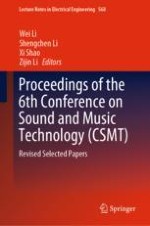This book discusses the use of advanced techniques to produce and understand music in a digital way. It gathers the first-ever English-language proceedings of the Conference on Sound and Music Technology (CSMT), which was held in Xiamen, China in 2018. As a leading event, the CSMT reflects the latest advances in acoustic and music technologies in China. Sound and technology are more closely linked than most people assume. For example, signal-processing methods form the basis of music feature extraction, while mathematics provides an objective means of representing current musicological theories and discovering new ones. Moreover, machine-learning methods include popular deep learning algorithms and are used in a broad range of contexts, from discovering patterns in music features to producing music. As these proceedings demonstrate, modern technologies not only offer new ways to create music, but can also help people perceive sound in innovative new ways.
